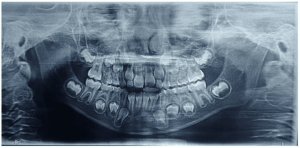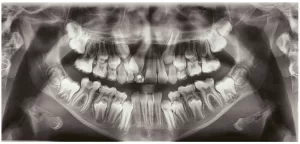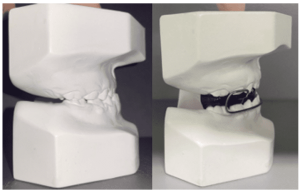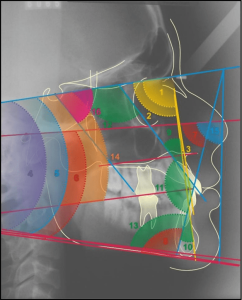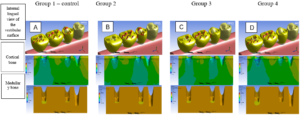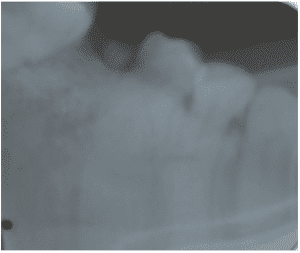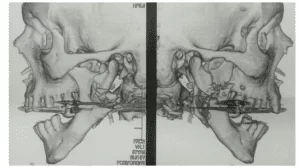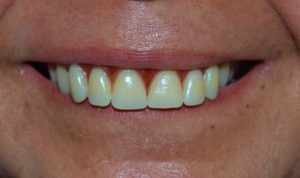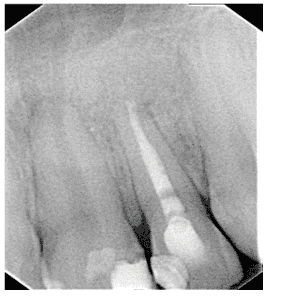ORIGINAL ARTICLE
MELO, Renata Patrícia Pereira de [1], SILVA, Natália Leal da [2], MACHADO, Fátima Lúcia Cartaxo [3], SOUZA, Rafael de [4]
MELO, Renata Patrícia Pereira de. Et al. Profile of users of the oral health service in Comendador Levy Gasparian/RJ. Revista Científica Multidisciplinar Núcleo do Conhecimento. Year 05, Ed. 10, Vol. 07, pp. 73-91. October 2020. ISSN: 2448-0959, Access Link: https://www.nucleodoconhecimento.com.br/dentistry/oral-health, DOI: 10.32749/nucleodoconhecimento.com.br/dentistry/oral-health
SUMMARY
The health of teeth and the oral cavity affects people’s quality of life, as it interferes with the ability to eat, communicate, aesthetics and prevent other diseases. The aim of this research is to identify the profile of users of oral health services in basic health units in the municipality of Comendador Levy Gasparian/RJ. The study population was composed of all users of the dental service of the municipality and the sample size for collection used a nonparametric sampling of the type for convenience. The research was carried out using the quantitative approach and data analysis using Descriptive Statistics. To facilitate analysis and compression, graphs were constructed with univary and bidata data. The results showed women, young people, the elderly, people of the yellow race and patients with Higher Education represent groups that least use the dental services of the municipality and strategies that attract such audiences can increase access to the service. The units near the urban center of the municipality received a larger number of participants.
Keywords: Public Health, Primary Health Care, Oral Health, Statistical Analysis.
1. INTRODUCTION
Social and geographical changes have posed challenges to the restructuring of health systems and services in many countries of the world in recent decades and some of them continue to change to the present.
Since the end of the 20th century, public health and public health services have faced unprecedented challenges. Countries have faced several health challenges, including communicable and non-communicable diseases.
The importance of promoting healthy behavior and addressing the social and economic determinants that make poor health is highlighted by the incidence and social topography of non-communicable diseases and, in many cases, those classified as transmissible.
The traditional objective of public health to protect the health of the public, mainly through preventive actions of diseases and protection and health promotion, becomes more evident than ever before.
Public health governance is something complex and composed of multifacets, since the organization and provision of public health services involve many different institutions and professions.
The programs, services, activities that make up public health are wide and varied in Brazil. In particular, in primary public health care there are several principles, guidelines, policies, programs, projects and organizational structures that represent public measures of health promotion, prevention, treatment and rehabilitation of users’ health.
A Brazilian public policy dedicated to oral health care is called the National Oral Health Policy. Based on this policy, Brazil began to include, according to the World Health Organization (WHO), a group of countries considered to have a low prevalence of caries.
As an integral part of the National Oral Health Policy, the Smiling Brazil Program was established. The objective of the program is to provide actions that facilitate and expand the access of users of the Unified Health System to free dental treatments in different Brazilian municipalities.
The health of the teeth and the oral cavity affects people’s quality of life, as they interfere with the daily ability to eat, talk and maintain communication. Dental treatment is a form of disease prevention, elimination of pain and discomfort in the region. In addition to direct intervention in the region, it is worth noting that the literature indicates the existence of a relationship between aspects of oral health and the contribution to the emergence of other diseases, such as diabetes, cardiovascular diseases, cancer and others.
Data and information from the National Cancer Institute warn of the need for oral health care. According to the institute, the estimated incidence of mouth cancer will reach approximately 15,000 people for each year of the triennium 2020-2022. Of that total, about 11,100 people will be male while 4,000 in women (BRASIL, 2019).
In light of the above, this research aims to identify the profile of users of oral health services provided by basic health units in the municipality of Comendador Levy Gasparian/RJ.
To achieve the objective of the research, a questionnaire of the type structured in the printed format was constructed for data collection with users in the basic health units of the municipality.
After the application of the research instruments, descriptive statistical techniques were used to facilitate the visualization and interpretation of the results.
The researchers also expect that data on demographic characteristics, collected in the answers of the research instrument, indicate specific groups that might need targeted actions.
The article is structured in the chapters referring to this Introduction and in the theoretical framework divided into four subheadings: Primary Health Care, Oral Health, National Oral Health Policy and Evaluation of Health Services. Later, the methodology chapter presents the strategy adopted in the research. The chapters referring to the discussions, results and conclusions were developed after the data collection period. Finally, the bibliographic references that contributed to the construction of the article were listed in the last chapter.
2. LITERATURE REVIEW
2.1 PRIMARY HEALTH CARE
The shift from planned to market economies has been the main driver of health system reforms, which in most countries have proved insufficient to maintain adequate preventive programs, such as childhood vaccination, and provide universal access to basic health services.
Public health services have a vital role to play in addressing health challenges around the globe. The World Health Organization (WHO) encourages Member States to place the strengthening of their health system at the heart of intergovernmental policies and actions, adopting well-defined plans and strategies.
WHO seeks to help Member States strengthen and improve their public health services as a vital part of the health system and focus on disease prevention, as well as on health protection and promotion.
Table 1: Levels of Health Care
| Levels | Definition | Examples |
| Primary | Measures to promote health, prevention, treatment and rehabilitation. The procedures involve low-cost technologies. | Routine care: consultations with the general practitioner, treatments, vaccination, prenatal care, dental care and follow-up of hypertensive and diabetic patients. |
| Secondary | It consists in the treatment of the disease already installed, in order to avoid the appearance of deficiencies or disabilities. They are formed by specialized services at the outpatient and hospital levels, with intermediate technological density. | Specialized medical services, diagnostic and therapeutic support and urgent and emergency care. |
| Tertiary | It designates the set of therapies and procedures of high specialization. It also organizes procedures involving high technology and/or high cost. | High-complexity outpatient procedures include chemotherapy, radiotherapy, hemotherapy, magnetic resonance imaging and nuclear medicine. |
Source: Adapted from Ministry of Health (2017). (Prepared by the authors).
Primary Health Care corresponds to the care required and accessible to each person individually, in addition to being applied to the population as a whole. It is provided in an acceptable way to users, to participate actively and with the costs corresponding to the capacities of the population and the State (MINISTÉRIO DA SAÚDE, 2017).
Primary Health Care is one of the criteria for rational use of the entire Brazilian public health system. Its objective is to solve the main public health problems through health promotion, prevention, treatment and rehabilitation measures. The logic of the strategy is based on investing more in primary prevention, to reduce the cost of victim care and greater impact and scope in the protection of the population (MINISTÉRIO DA SAÚDE, 2017).
Due to the economic conditions, social values, geographical characteristics and culture of primary health care in several localities it may have specific characteristics, but, regardless, it includes the following function.
Primary Health Care was developed to promote social justice and equity by recognizing health as a fundamental right, according to article 25 of the Universal Declaration of Human Rights, which defends that human beings have “[…] the right to a standard of living capable to ensure you and your family health and well-being, including food, clothing, housing, medical care and the indispensable social services […] ”(ONU, 2009).
In 2018, representatives from different nations reaffirmed their commitment to strengthen primary health care through the Astana Declaration. This document proposes that states seek to achieve universal health coverage and represents a key approach to achieving the health-related Sustainable Development Goals (ODS) (GIOVANELLA et al., 2019).
Chart 2 demonstrates the basic principles of Primary Health Care advocated by the Ministry of Health.
Table 2: Basic Principles of Primary Health Care
| Principles | Definition |
| Universality | Enable universal and continuous access to quality and problem-making health services, characterized as the open and preferential gateway of the Health Care Network (first contact), welcoming people and promoting solidarity linkage and accountability for the care of their health needs. |
| Equity | Offer care, recognizing the differences in living and health conditions and according to people’s needs, considering that the right to health goes through social differentiations and must meet diversity. |
| Completeness | It is the set of services performed by the health team that meet the needs of the population enrolled in the fields of care, health promotion and maintenance, disease and disease prevention, cure, rehabilitation, harm reduction and palliative care. |
Source: Adapted from Ministry of Health (2017). (Prepared by the authors).
The basic principles guide a set of initiatives of the Ministry of Health that serves users in the environment in which they live. Among other programs, actions and strategies of primary health care, it is relevant to highlight the existence of some initiatives: (a) National Primary Care Policy; (b) National Policy for Comprehensive Health Care for Persons Deprived of Liberty in the Prison System; (c) National Food and Nutrition Policy; (d) National Oral Health Policy; (e) Telehealth Program Brazil Networks; (f) National Program for Improving Access and Quality in Primary Care (PMAQ-AB) and others.
Among the previous initiatives, the National Oral Health Policy is applied to Primary Health Care by promoting actions to promote, prevent and recover the oral health of the population through the network of basic units of the Unified Health System.
2.2 ORAL HEALTH
The terms oral and general health should not be interpreted as separate concepts. Oral health is an integral part of everyone’s health and well-being of all people.
In addition to the issue of health, dental problems can have social consequences, such as personality disorder due to vexatiatory comments from third parties and that may result in problems related to social esteem and alienation, are aspects that result from the oral health impact profile (SLADE; SPENCER, 1994; FERREIRA et al., 2020).
The World Health Organization defines oral health as a state free of oral and facial pain, diseases and oral disorders that limit an individual’s ability to bite, chew, smile, speak and psychosocial well-being (WHO, 2013).
The oral region covers the oral cavity and is not restricted to the teeth, gums and supporting tissues, but also the palate, soft membranes and mucous membranes of the mouth and larynx, tongue, lips, salivary glands, masticatory muscles and jaw (WHO, 2013).
Oral health is essential for health and well-being in general, since it influences quality of life. Timely detection of oral diseases may contribute to the diagnosis and treatment of various systemic diseases (ARAÚJO-JÚNIOR et al., 2018; SOUZA et al., 2018).
Typical oral health problems are dental caries, periodontal diseases, malocclusion, injury, oral cancer and others. A thorough examination of the oral cavity reveals signs of nutrient deficiency, in addition to several systemic diseases, including infections, immune disorders, lesions and certain types of cancers (SANTOS et al., 2011; TERRA; GOULART; BAVARESCO, 2011; WHO, 2013; OLIVEIRA, 2018).
Cancer of the mouth is a malignant tumor that can affect the lips and structures of the mouth (gums, cheeks, heaven of the mouth, tongue and the region under the tongue). It is common in men over 40 years of age, it is the fourth type of tumor present in males in the Southeast region. Most cases are diagnosed in advanced stages (GUERRA; SANTOS, 2018; MINISTRY OF HEALTH, 2019).
Between 2007 and 2017, 26,510 deaths from cancers of the lip, base of the tongue, other parts of the tongue, gums, floor of the mouth, palate and other parts of the mouth were recorded (INCA[?]).
The World Health Organization estimates that prevention can help reduce the incidence of cancer cases by approximately 25% by the year 2025. The periodic visit to the dentist favors the early diagnosis of oral cancer, since it allows the identification of lesions classified as suspicious.
Diagnosed at the beginning and treated adequately, most cases of this type of cancer have cures: 80% of incidences. Treatment usually involves oncological surgery and/or radiotherapy. The medical evaluation, according to each case, will decide the most appropriate form of treatment (MINISTÉRIO DA SAÚDE, 2018; OLIVEIRA et al., 2018).
Some diseases can affect oral health and require multidisciplinary treatment, such as diabetes and HIV viruses. People with diabetes have a higher risk of developing oral diseases caused by various bacteria, viruses and fungi. High levels of sugar in saliva can trigger bacteria in the mouth. Diabetes can also cause a decrease in the amount of saliva, which in turn can cause gum disease and caries (TERRA; GOULART; BAVARESCO, 2011; SOUZA et al., 2018; JUCÁ et al, 2019).
The immunodeficiency virus can cause tooth decay, gum disease and oral infections such as oral papillomas, fungal infections, and ulcers. The drugs used against the HIV virus can cause dry mouth (BRASIL, 2004; SANTOS et al., 2011; JUCÁ et al, 2019).
Given the physical and social dimensions related to oral health, the Brazilian public sector has developed a targeted national public policy.
2.3 NATIONAL ORAL HEALTH POLICY
The National Oral Health Policy is a milestone in the history of Brazilian public policies by incorporating the theme an agenda under discussion since the Brazilian Health Reform Movement (BRASIL, 2004; BRASIL, 2013).
The main goal stipulated in the National Oral Health Policy provides for the reorganization of the practice and the qualification of the actions and services offered in the country, bringing together measures to ensure actions for the promotion, prevention and recovery of oral health of Brazilians of all ages, with expanded access to services related to free dental treatment through the SUS (BRASIL, 2004).
As part of the National Oral Health Policy, the Brazilian Smiling Program of the federal government brings together a series of measures to ensure actions to promote, prevent and recover the oral health of Brazilians. With this, the program seeks to facilitate and expand the population’s access to free dental treatment for Brazilians through the Unified Health System (SUS) (BRASIL, 2004; BRASIL, 2013; PERES et al., 2012).
Before Smiling Brazil, the country had no public health policy for the sector. Only those who could afford a consultation had a period of dental care in Brazil. However, before Smiling Brazil, there was practically no rehabilitation in oral health (BRASIL, 2004).
By working the axes of oral health care from the increase of primary care through the Family Health Strategy, the implementation of dental specialty centers as a structuring element of secondary care, in addition to collective actions, the Smiling Brazil Program is part of the set of strategic programs of the current health policy (BRASIL, 2013).
The national policy directed to dental services in public health units allowed to reduce social inequalities in access and oral health treatments, since it expanded the supply of services in different Brazilian municipalities (PERES et al., 2012).
3. METHODS
The research is classified as exploratory, selection of the quantitative approach, use of descriptive statistics (univariate and bivariate) and data collection by means of a printed structured questionnaire and with objective questions corresponding to the demographic aspect (BÊRNI; FERNANDEZ, 2012; CRESWELL, 2010).
The study population considered all users of oral health services in the municipality and the research sample was through non-probabilistic sampling of the convenience sampling type, since this technique allows a greater degree of freedom to the researcher in defining the number of participants (BÊRNI; FERNANDEZ, 2012).
Although the printed questionnaire was costly, this choice was intended to reach a larger number of participants, while the use of an online questionnaire could be a limiting one due to the economic and regional characteristics of the city (BÊRNI; FERNANDEZ, 2012).
The research instrument was structured in a block, in which the statements that sought to identify the demographic profile of the participants were distributed: age group, gender, race, education and health unit that attends.
The collected data were tabulated in a spreadsheet, while the treatment and analysis occurred with the aid of the R Studio software.
4. RESULTS
The research was carried out in the basic health units of the municipality of Comendador Levy Gasparian, located in the South Fluminense Region of the State of Rio de Janeiro. Data were collected from November 15 to December 15, 2019.
The initial data showed that the initial database consisted of 18 variables (columns) and 118 observations (rows). In the exploratory analysis, missing data were identified due to the assertions that were not filled out by the respondents.
In order to enable the analysis, the missing data were suppressed and a new database was generated, composed of 18 variables and 106 observations, with a loss of 10.16% of the data.
The demographic analysis of the respondents’ data was performed in a univariate and bivariate way.
Regarding age group, the univariate analysis shows that most users are between 31 and 60 years old. It is observed that after 40 years the number of patients decreases, particularly in the elderly population, as well as in the younger population.
Table 1 – Age group
| Age group | Amount |
| 18 to 20 years | 9 |
| 21 to 30 years | 10 |
| 31 to 40 years | 32 |
| 41 to 50 years | 22 |
| 51 to 60 years | 22 |
| 61 to 70 years | 9 |
| More than 70 years | 1 |
| I’d rather not inform | 1 |
Source: Research result (Prepared by the authors).
Table 2 shows a significant number of male patients (82%) compared to females (17%).
Table 2: Gender
| Genre | Amount |
| Male | 87 |
| Female | 18 |
| I’d rather not inform | 1 |
Source: Research result (Prepared by the authors).
Patients who declared themselves as brown represent the largest share of dental service users in the municipality surveyed, while yellow patients represent the minority of the population. It is noteworthy that the quantitative white and black patients are close.
Table 3 – Race
| Cow | Amount |
| Yellow | 3 |
| White | 33 |
| Black | 28 |
| Pardo | 38 |
| I’d rather not inform | 4 |
Source: Research result (Prepared by the authors).
Users of the oral health service with schooling at the middle (54) and elementary (40) levels represent the majority, corresponding respectively in percentage terms to 51% and 38% of the respondents.
Table 4 – Schooling
10I prefer not to report2
| Schooling | Amount |
| Elementary School | 40 |
| High School | 54 |
| Higher Education |
Source: Research result (Prepared by the authors).
The basic health unit Centro (30) is the agency that had the most respondents regarding dental services, followed by the Gulf unit (26) which is located near the center of the municipality, as shown in Table 5.
A lower number of members of the basic unit of Mont Serrat (4) may occur because the locality is in a rural area.
Table 5 – Basic health units of the research
| Name of the Basic Health Unit | Amount |
| Afonso Arinos | 11 |
| Centro | 30 |
| Conjunto Luiz Bento Argon | 1 |
| Fonseca Almeida | 14 |
| Grotão | 20 |
| Gulf | 26 |
| Mont Serrat | 4 |
Source: Research result (Prepared by the authors).
The bivariate analysis of the data allows observing them from two variables and understanding the context from another perspective (CRESWELL, 2010).
The analysis of the variables age and gender allows us to identify that the female audience between 31 and 50 years (29%; 17%) and the male audience between 51 and 60 (7%) years, are the users who most use dental services in the municipality. It is worth noting the absence of male people over 70 years of age (0%).
Table 6 – Proportion between age group and gender
| Genre | |||
| Age group | Female | Male | I’d rather not inform |
| 18 to 20 years | 6% | 3% | 0% |
| 21 to 30 years | 8% | 2% | 0% |
| 31 to 40 years | 29% | 1% | 0% |
| 41 to 50 years | 17% | 3% | 1% |
| 51 to 60 years | 14% | 7% | 0% |
| 61 to 70 years | 7% | 2% | 0% |
| More than 70 years | 1% | 0% | 0% |
| I’d rather not inform | 1% | 0% | 0% |
Source: Research result (Prepared by the authors).
Table 7 shows the proportional distribution of data from the variables age group and race of the respondents.
People of the yellow race, outside the age group of 41 to 60 years, have results equal to 0%.
White and black users range from 3% to 9% in the age groups of the study, except for patients over 70 years (0%). Brown patients are those who are distributed in all age groups, concentrated predominantly between 31 and 50 years (11%; 12%).
Table 7 – Proportion between age group and race
| Cow | ||||||
| Age group | Yellow | White | Black | Pardo | I’d rather not inform | |
| 18 to 20 years | 0% | 3% | 4% | 2% | 0% | |
| 21 to 30 years | 0% | 5% | 1% | 4% | 0% | |
| 31 to 40 years | 0% | 9% | 9% | 11% | 0% | |
| 41 to 50 years | 1% | 5% | 2% | 12% | 1% | |
| 51 to 60 years | 2% | 7% | 8% | 5% | 0% | |
| 61 to 70 years | 0% | 3% | 3% | 1% | 2% | |
| More than 70 years | 0% | 0% | 0% | 1% | 0% | |
| I’d rather not inform | 0% | 0% | 0% | 0% | 1% | |
Source: Research result (Prepared by the authors).
Patients who, of all age groups and who have completed elementary school, use dental services in the municipality. In relation to high school level, no patients over 70 years of age were identified.
In the group of users who have higher education, the age group is between 21 and 60 years, that is, younger and older patients did not participate.
Table 8 – Proportion between age group and schooling
| Schooling | |||||
| Age group | Elementary School | High School | Higher Education | I’d rather not inform | |
| 18 to 20 years | 1% | 7% | 0% | 1% | |
| 21 to 30 years | 2% | 6% | 2% | 0% | |
| 31 to 40 years | 12% | 16% | 2% | 0% | |
| 41 to 50 years | 8% | 10% | 3% | 0% | |
| 51 to 60 years | 10% | 8% | 3% | 0% | |
| 61 to 70 years | 4% | 5% | 0% | 0% | |
| More than 70 years | 1% | 0% | 0% | 0% | |
| I’d rather not inform | 0% | 0% | 0% | 1% | |
Source: Research result (Prepared by the authors).
The distribution of the age group of patients by basic health units in the municipality makes it possible to identify which ones deserve attention from managers.
The Conjunto Luiz Alberto Argon unit had low support, because only 1% is between 31 and 40 years old, while in the Center unit the patient data are distributed in all age groups.
The basic unit of Afonso Arinos had no participants between 18 and 20 years and patients over 70 years. Something similar occurs in the Mont Serrat unit in relation to the younger and elderly public, differing only because patients over 61 years of age do not use it.
By observing the data of the Fonseca Almeida unit, it is identified that the old people are an audience that does not use dental services.
Table 9 – Proportion between age group and Basic Health Units
| Basic Health Unit | |||||||||
| Age group | Afonso Arinos | Centro |
|
Fonseca Almeida | Grotão | Gulf | Mont Serrat | ||
| 18 to 20 years | 0% | 2% | 0% | 4% | 1% | 2% | 0% | ||
| 21 to 30 years | 1% | 1% | 0% | 3% | 1% | 3% | 1% | ||
| 31 to 40 years | 4% | 8% | 1% | 2% | 3% | 13% | 0% | ||
| 41 to 50 years | 2% | 8% | 0% | 3% | 6% | 2% | 1% | ||
| 51 to 60 years | 3% | 6% | 0% | 1% | 6% | 4% | 2% | ||
| 61 to 70 years | 1% | 4% | 0% | 0% | 3% | 1% | 0% | ||
| More than 70 years | 0% | 1% | 0% | 0% | 0% | 0% | 0% | ||
| I’d rather not inform | 0% | 0% | 0% | 1% | 0% | 0% | 0% | ||
Source: Research result (Prepared by the authors).
White, black and brown female patients concentrate the majority of users, while yellow men are the minority in dental treatment offices.
Table 10 – Gender-race ratio
| Cow | ||||||
| Genre | Yellow | White | Black | Pardo | I’d rather not inform | |
| Female | 1% | 25% | 23% | 32% | 2% | |
| Male | 2% | 7% | 4% | 4% | 1% | |
| I’d rather not inform | 0% | 0% | 0% | 0% | 1% | |
Source: Research result (Prepared by the authors).
Table 11 shows that people with higher education represent the smallest group, composed of 8% of women and only 2% of men.
Table 11 – Gender-to-school ratio
| Schooling | |||||
| Genre | Elementary School | High School | Higher Education | I’d rather not inform | |
| Female | 31% | 42% | 8% | 1% | |
| Male | 7% | 8% | 2% | 1% | |
| I’d rather not inform | 0% | 1% | 0% | 0% | |
Source: Research result (Prepared by the authors).
The Center unit concentrates the highest percentage of the male audience (7%), while the Centro units (21%) and Gulf (21%) serve most women.
Table 12 – Gender and Basic Health Units
| Basic Health Unit | |||||||||
| Genre | Afonso Arinos | Centro |
|
Fonseca Almeida | Grotão | Gulf | Mont Serrat | ||
| Female | 10% | 21% | 1% | 11% | 14% | 21% | 4% | ||
| Male | 0% | 7% | 0% | 2% | 5% | 4% | 0% | ||
| I’d rather not inform | 0% | 1% | 0% | 0% | 0% | 0% | 0% | ||
Source: Research result (Prepared by the authors).
Users of the public service with educational training in high school, of the white races (19%) and brown (21%), are the main patients of the oral health service. The population with educational training in elementary school, black and brown users are the main beneficiaries of the oral health service in the municipality.
Table 13 – Proportion between race and schooling
| Schooling | |||||
| Cow | Elementary School | High School | Higher Education | I’d rather not inform | |
| Yellow | 1% | 1% | 1% | 0% | |
| White | 8% | 19% | 4% | 0% | |
| Black | 14% | 9% | 2% | 1% | |
| Pardo | 12% | 21% | 3% | 0% | |
| I’d rather not inform | 2% | 1% | 0% | 1% | |
Source: Research result (Prepared by the authors).
The Unit Conjunto Luiz Alberto Argon did not have yellow, white and brown patients, while the Fonseca Almeida, Gulf and Mont Serrat units did not serve yellow users. In the Mont Serrat unit, the presence of black patients was not recorded, as shown in Table 14.
White patients mostly use the Centro, Fonseca Almeida and Gulf units, while black patients mostly use the Gulf and Grotão units. Users of the brown race are users of the Gulf and Centro units.
Table 14 – Race and Basic Health Units
| Basic Health Unit | |||||||||
| Cow | Afonso Arinos | Centro | Conjunto Luiz Alberto Argon | Fonseca Almeida |
|
Gulf | Mont Serrat | ||
| Yellow | 0% | 1% | 0% | 0% | 2% | 0% | 0% | ||
| White | 4% | 9% | 0% | 7% | 5% | 5% | 2% | ||
| Black | 4% | 4% | 1% | 4% | 7% | 8% | 0% | ||
| Pardo | 2% | 12% | 0% | 2% | 6% | 12% | 2% | ||
| I’d rather not inform | 1% | 2% | 0% | 0% | 0% | 0% | 0% | ||
Source: Research result (Prepared by the authors).
Table 15 demonstrates users with higher education are distributed in most basic units, except in the Luiz Alberto Argon and Mont Serrat Complex. The Centro unit concentrates the majority of users with Elementary and High School.
Table 15 – Schooling and Basic Health Units
| Basic Health Unit | ||||||||
| Schooling | Afonso Arinos | Centro | Conjunto Luiz Alberto Argon | Fonseca Almeida | Grotão | Gulf | Mont Serrat | |
| Elementary School | 4% | 8% | 0% | 3% | 8% | 12% | 2% | |
| High School | 5% | 19% | 1% | 6% | 8% | 10% | 2% | |
| Higher Education | 2% | 1% | 0% | 3% | 2% | 2% | 0% | |
| I’d rather not inform | 0% | 0% | 0% | 2% | 0% | 0% | 0% | |
Source: Research result (Prepared by the authors).
The tables of the results were presented in order to facilitate the visualization of the data and in the next chapters the discussions are presented.
5. DESCUSSIONS
The literature demonstrates the existence of advanced statistical analysis techniques that can provide results with another level of accuracy, however, the simplicity of the treatment and analysis of data through descriptive statistics can prove efficient in municipalities that lack professionals with training for the use of robust techniques in the area of exact.
Research with a quantitative approach allows generalization from the data and this can represent a limitation to the results. Thus, studies using qualitative approach techniques applied to specific groups can bring new results.
Understanding the profile of users of public services alone does not guarantee access to such services, but allows public and health managers to outline regionalized strategies that meet the specific needs and characteristics of different populations.
Estimated INCA (National Cancer Institute) data indicate the emergence of new cases of oral cavity cancer expected in Brazil for each year of the triennium 2020-2022. For this institute, there will be 11,180 cases in men and 4,010 in women.
The research data showed that the following treatment of oral health services by male people in the municipality of Comendador Levy Gasparian is superior to the female, contrary to the estimated inca data.
6. CONCLUSIONS
The research was dedicated to identifying the profile of users of oral health services in the municipality of Comendador Levy Gasparian, located in the interior of the State of Rio de Janeiro. For this, a questionnaire was applied to identify demographic aspects of users regarding age, gender, race, education and basic health unit used.
In the age group aspect, the results indicated a lower access to the service by the older and younger people. In relation to the young population, it is emphasized that the research was restricted to users over 18 years of age due to the need for authorization of guardians to participate in the research, this fact demonstrates a limitation for results obtained that did not consider the potential of all age groups of the young public.
Strategies that sensitize the old and young people regarding oral health care may be timely in the municipality.
Regarding gender, the presence of women was much lower than the presence of men. This result may indicate the need for public actions that attract dental treatment in the municipality.
Regarding race, the results showed an equitable distribution among whites, blacks and browns. We highlight the exception regarding the number of people who declared themselves yellow and those who preferred not to report.
Data regarding the students’ education indicated that the majority have elementary and high school, public stakes that tend to be inserted in work activities with lower incomes and usually those who need public health services.
The basic health units of the Center and near the central region of the municipality (Grotão and Gulf) have a higher number of access to oral health services when purchased to the most remote units.
Basic health units that are far from the central region can seek strategies to sensitize users during the actions of the Family Health visit.
Future research is recommended to use analysis techniques with a more complex quantitative approach: time series, regressions and others.
Studies that seek to analyze the profile of users of oral health services in the group of adolescents, children, as well as in school and prison units.
REFERENCES
ARAÚJO-JÚNIOR, Júlio Leite de et al. Perfil clínico e epidemiológico das alterações bucais em portadores do HIV. Archives of Health Investigation, v. 7, n. 8, p. 339-343, 2018.
BÊRNI, Duilio de Avila; FERNANDEZ, Brena Paula Magno. Métodos e Técnicas de Pesquisa: Modelando as ciências empresariais. São Paulo: Saraiva, 2012.
BRASIL. Ministério da Saúde. Decreto nº 9.795, de 17 de maio de 2019. Aprova a Estrutura Regimental e o Quadro Demonstrativo dos Cargos em Comissão e das Funções de Confiança do Ministério da Saúde, remaneja cargos em comissão e funções de confiança, transforma funções de confiança e substitui cargos em comissão do Grupo-Direção e Assessoramento Superiores – DAS por Funções Comissionadas do Poder Executivo – FCPE. Brasília: Ministério da Saúde, 2019. Disponível em: <http://www.planalto.gov.br/ccivil_03/_ato2019-2022/2019/decreto/D9795.htm>. Acesso em 10 nov. 2019.
BRASIL. Ministério da Saúde. Passo a passo das ações do Brasil Sorridente. Brasília: Ministério da Saúde; 2013.
BRASIL. Ministério da Saúde. Diretrizes da política nacional de saúde bucal. Brasília: Ministério da Saúde; 2004.
CAMPOS, Fernanda Araújo Trigueiro et al. Manifestações bucais decorrentes da quimioterapia em crianças. Revista Campo do Saber, v. 4, n. 5, p. 136-159, 2018.
CRESWELL, John W.. Projetos de Pesquisa: métodos qualitativo, quantitativo e mistos. Porto Alegre: Artmed; 2010.
FERREIRA, Denise Carvalho et al. Aspectos psicossociais e percepção de impacto da saúde bucal na qualidade de vida em adultos do Sul do Brasil. Revista Brasileira de Epidemiologia, v. 23, e200049, p. 1-13, 2020.
GIOVANELLA, Lígia et al. De Alma-Ata a Astana. Atenção primária à saúde e sistemas universais de saúde: compromisso indissociável e direito humano fundamental. Caderno de Saúde Pública, v. 35, n. 3, e00012219, 2019.
GUERRA, Letícia de Freitas Cuba; SANTOS, Ana Tayline do. Perfil odontológico de pacientes internados na Unidade de Terapia Intensiva de um hospital oncológico do Sudoeste do Paraná. Arquivos de Ciências da Saúde da UNIPAR, v. 22, n. 2, p. 75-80, 2018.
INSTITUTO NACIONAL DE CÂNCER (INCA). Sistema de Informações sobre Mortalidade. Atlas On-line de Mortalidade. Disponível em: https://mortalidade.inca.gov.br/MortalidadeWeb/pages/Modelo10/consultar.xhtml. Acesso em 03 jan. 2020.
JUCÁ, Maria Augusta Cunha Lima et al. Impactos da saúde bucal de usuários com HIV/Aids em um serviço especializado. Revista Brasileira de Enfermagem, v. 72, n. 6, p. 1649-1657, 2019.
MINISTÉRIO DA SAÚDE. Estimativa 2020: incidência de câncer no Brasil. Rio de Janeiro: INCA; 2019. 120 p.
MINISTÉRIO DA SAÚDE. Ministério da Saúde chama atenção para a Semana Nacional de Prevenção do Câncer Bucal [Internet]. Brasil: Ministério da Saúde; 05/11/2018 [revisado em 05/11/2018]. Disponível em: https://www.saude.gov.br/noticias/agencia-saude/44603-ministerio-da-saude-chama-atencao-para-a-semana-nacional-de-prevencao-do-cancer-bucal. Acesso em 10 nov. 2019.
MINISTÉRIO DA SAÚDE. Portaria de Consolidação nº 2, de 28 de setembro de 2017. Consolidação das normas sobre as políticas nacionais de saúde do Sistema Único de Saúde. Brasília: Ministério da Saúde, 2017. Disponível em: <http://bvsms.saude.gov.br/bvs/saudelegis/gm/2017/prc0002_03_10_2017.html>. Acesso em 11 nov. 2019.
MINISTÉRIO DA SAÚDE. Portaria nº 2.436, de 21 de setembro de 2017. Aprova a Política Nacional de Atenção Básica, estabelecendo a revisão de diretrizes para a organização da Atenção Básica, no âmbito do Sistema Único de Saúde (SUS). Brasília: Ministério da Saúde, 2017. Disponível em: <http://bvsms.saude.gov.br/bvs/saudelegis/gm/2017/prc0002_03_10_2017.html>. Acesso em 11 nov. 2019.
OLIVEIRA, Eduardo José Pereira et al. Qualidade de vida e condições de saúde bucal de hipertensos e diabéticos em um município do Sudeste Brasileiro. Ciência & Saúde Coletiva, v. 23, n. 3, p. 763-772, 2018.
ORGANIZAÇÃO DAS NAÇÕES UNIDAS (ONU). Transformando Nosso Mundo: A Agenda 2030 para o Desenvolvimento Sustentável. 2015. 49 p. Disponível em: <https://nacoesunidas.org/wp-content/uploads/2015/10/agenda2030-pt-br.pdf>. Acesso em: 15 nov. 2019.
ORGANIZAÇÃO DAS NAÇÕES UNIDAS (ONU). Declaração Universal dos Direitos Humanos. 2009. 10 p. Disponível em: <https://nacoesunidas.org/wp-content/uploads/2018/10/DUDH.pdf>. Acesso em: 14 nov. 2019.
PERES, Karen Glazer et al. Redução das desigualdades sociais na utilização de serviços odontológicos no Brasil entre 1998 e 2008. Revista de Saúde Pública, v. 46, n. 2, p. 250-258, 2012.
SANTOS, Isabela Vieira et al. Práticas Acadêmicas, Cirurgiões-dentistas, População e Câncer Bucal. Revista Odontologia Clínico-Científica, v. 10, n. 3, p. 207-210, 2011.
SLADE, Gary D.; SPENCER, A. J. Development and evaluation of the Oral Health Impact Profile. Community Dental Health, v. 11, n. 1, p. 3-11, 1994.
SOUZA, Anderson Jambeiro de et al. Factors associated with dental caries, periodontitis and intra-oral lesions in individuals with HIV / AIDS. Journal AIDS Care, v. 30, n. 5, 2018.
TERRA, Betina Garay; GOULART, Ricardo Rahal; BAVARESCO, Caren Serra. O cuidado odontológico do paciente portador de diabetes mellitus tipo 1 e 2 na Atenção Primária à Saúde. Revista APS, v. 14, n. 2, p. 149-161, 2011.
WORLD HEALTH ORGANIZATION (WHO). Oral health surveys: basic methods. World Health Organization; 2013. 142 p.
[1]
Graduated in Public Administration (UFF/PUVR).
[2] Graduated in Public Administration (UFF/PUVR).
[3] Belª in Dentistry and Master’s degree in Environmental Sciences (University of Vassouras).
[4] Me. (UFF/PPGAd), Bel. in Public Administration (UFF/PUVR), graduating in Data Science (UNIVESP).
Submitted: September, 2020.
Approved: October, 2020.

